India, a land of captivating contrasts and vibrant experiences, stretches from the towering Himalayas to the tropical shores of the south. With such geographical diversity, the best time to visit India isn’t a single answer but a tapestry woven from regional climates and seasonal highlights. Understanding India’s seasons is key to crafting your ideal journey, whether you dream of exploring ancient forts, basking on sun-kissed beaches, or trekking through breathtaking mountain landscapes. This guide will navigate you through the best times to travel to India, ensuring you make the most of this incredible destination.
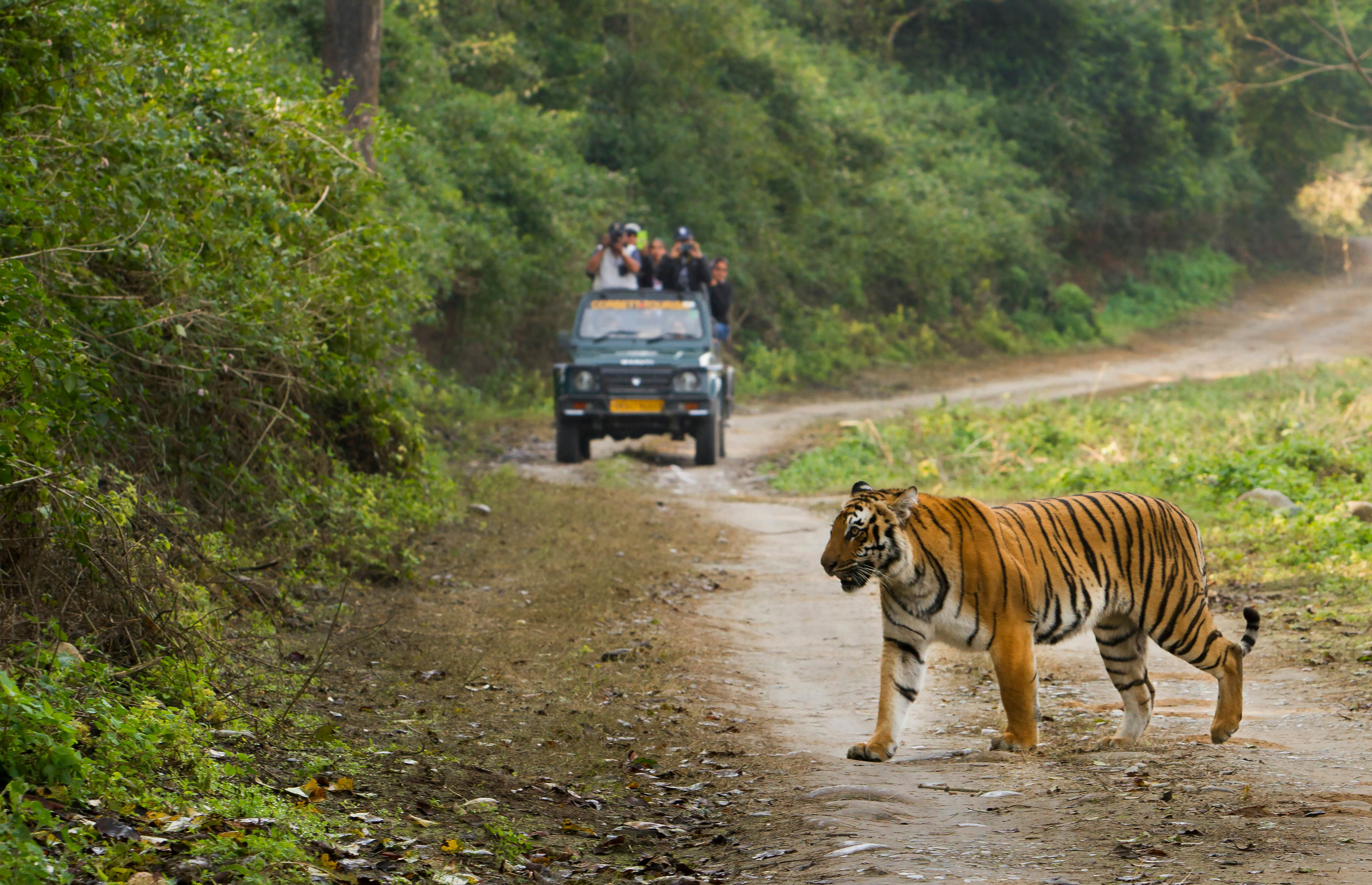 A tourist 4WD on safari in India observing a Bengal Tiger
A tourist 4WD on safari in India observing a Bengal Tiger
Winter (December to March): Peak Season for North and Central India
The winter months, from December to March, are widely considered the peak tourist season in India, and for good reason. This period offers the most agreeable weather across much of the country, particularly in the northern and central plains. Expect sunny days with warm temperatures, making it perfect for exploring historical sites, bustling cities, and enjoying outdoor activities.
Ideal for:
- Golden Triangle & Rajasthan Exploration: Cities like Delhi, Agra, and Jaipur, along with the desert landscapes of Rajasthan, experience mild days and cool nights. This is the best time to explore forts, palaces, and vibrant markets without the scorching heat of summer.
- Tiger Safaris: National parks in central India, such as Kanha, Bandhavgarh, and Ranthambhore, are at their prime. Drier conditions mean less vegetation, making wildlife spotting, especially tigers, easier. Animals are also more active in the cooler temperatures.
- Temple Visits: The pleasant weather is ideal for visiting the numerous temples and sacred sites across India, from the Ganges plains to the southern states.
- Beach Getaways (South India & Goa): While South India remains warm year-round, winter brings drier and more comfortable conditions to coastal areas like Goa, Kerala, and Tamil Nadu, perfect for beach holidays.
Things to consider:
- Peak Season Prices: As it’s the most popular time to visit, expect higher prices for flights and accommodations, and more crowded tourist attractions.
- Northern Fog: Morning fog in North Indian plains can sometimes disrupt transportation, especially air travel.
- Himalayan Foothills Chill: While generally pleasant, the foothills of the Himalayas can experience cold temperatures, even frost.
- Festivals & Events: December to March is packed with festivals, including Christmas celebrations in Goa and Kerala, Republic Day in Delhi (January 26th), and Holi in late February or March, adding cultural vibrancy to your trip.
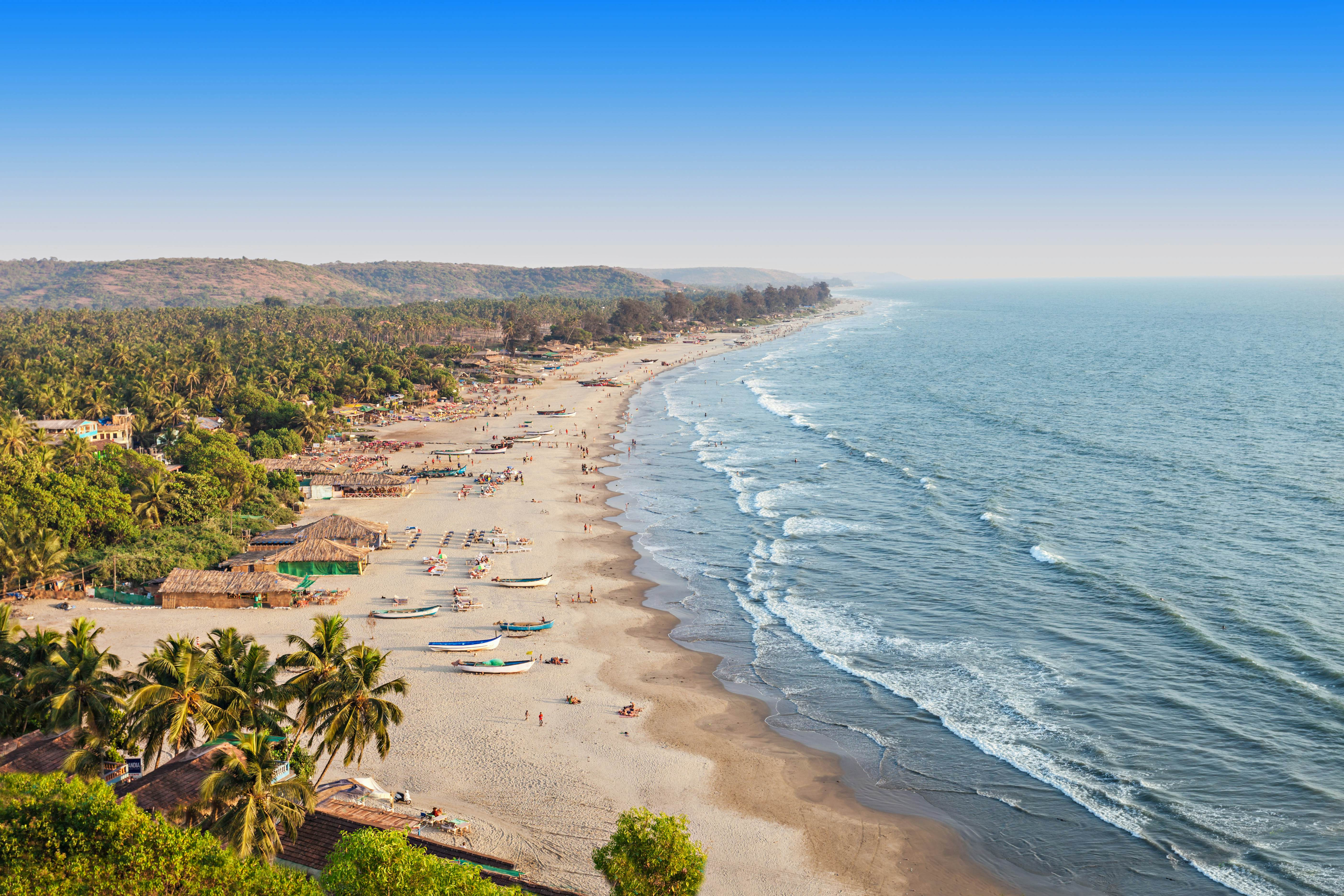 High-angle view of Arambol beach: a white stretch of sand being lapped by waves and backed by palm tress. On the sand a number of people sunbathe and a handful of colorful fishing boats also line the shore.
High-angle view of Arambol beach: a white stretch of sand being lapped by waves and backed by palm tress. On the sand a number of people sunbathe and a handful of colorful fishing boats also line the shore.
Summer and Monsoon (April to September): Himalayas Beckon & Off-Season Benefits
While the plains of India swelter in the summer heat from April to June, followed by the monsoon rains from June to September, this period opens up unique travel opportunities, especially in the Himalayan regions and offers off-season advantages elsewhere.
Ideal for:
- Himalayan Adventures (June to September): Ladakh, Himachal Pradesh, and Uttarakhand become havens during the summer and monsoon. These regions are largely unaffected by the monsoon rains that lash the rest of India, offering dry and pleasant weather ideal for trekking, mountain biking, and exploring stunning landscapes.
- Ladakh Exploration: This is the peak season for Ladakh. Roads to Ladakh open (around June), and the region’s Buddhist monasteries, high-altitude deserts, and trekking trails are accessible.
- Hill Stations Retreat (April to June): Escape the heat in popular hill stations like Shimla, Darjeeling, and Munnar. While it might be pre-monsoon, temperatures are significantly cooler than the plains, providing respite.
- Monsoon Magic (June to September): For a different perspective, experience the lush greenery and dramatic landscapes of India during the monsoon. While heavy rains can disrupt travel, they also bring a refreshing coolness and rejuvenate the countryside. Kerala and Goa transform into verdant paradises.
- Festival Experiences: Even during the monsoon, India’s festival calendar is active. Rath Yatra in Puri (June/July), Hemis Festival in Ladakh (June/July), and Ganesh Chaturthi (August/September) offer unique cultural immersions.
- Budget Travel: The summer and monsoon months are generally considered the off-season in many parts of India. You can find significantly lower prices on accommodations and tours, making it a budget-friendly time to travel.
Things to consider:
- Intense Heat (April to June): The plains of India experience extreme heat during these months. Sightseeing in cities can be challenging and uncomfortable.
- Monsoon Rains (June to September): Heavy rainfall can cause flooding, landslides, and travel disruptions in many parts of India. Coastal areas and some cities can experience waterlogging.
- Limited Accessibility: Some roads and trekking routes in the Himalayas might be affected by early or late monsoon rains.
- Goa Off-Season: Goa’s beach resorts are largely closed during the monsoon season.
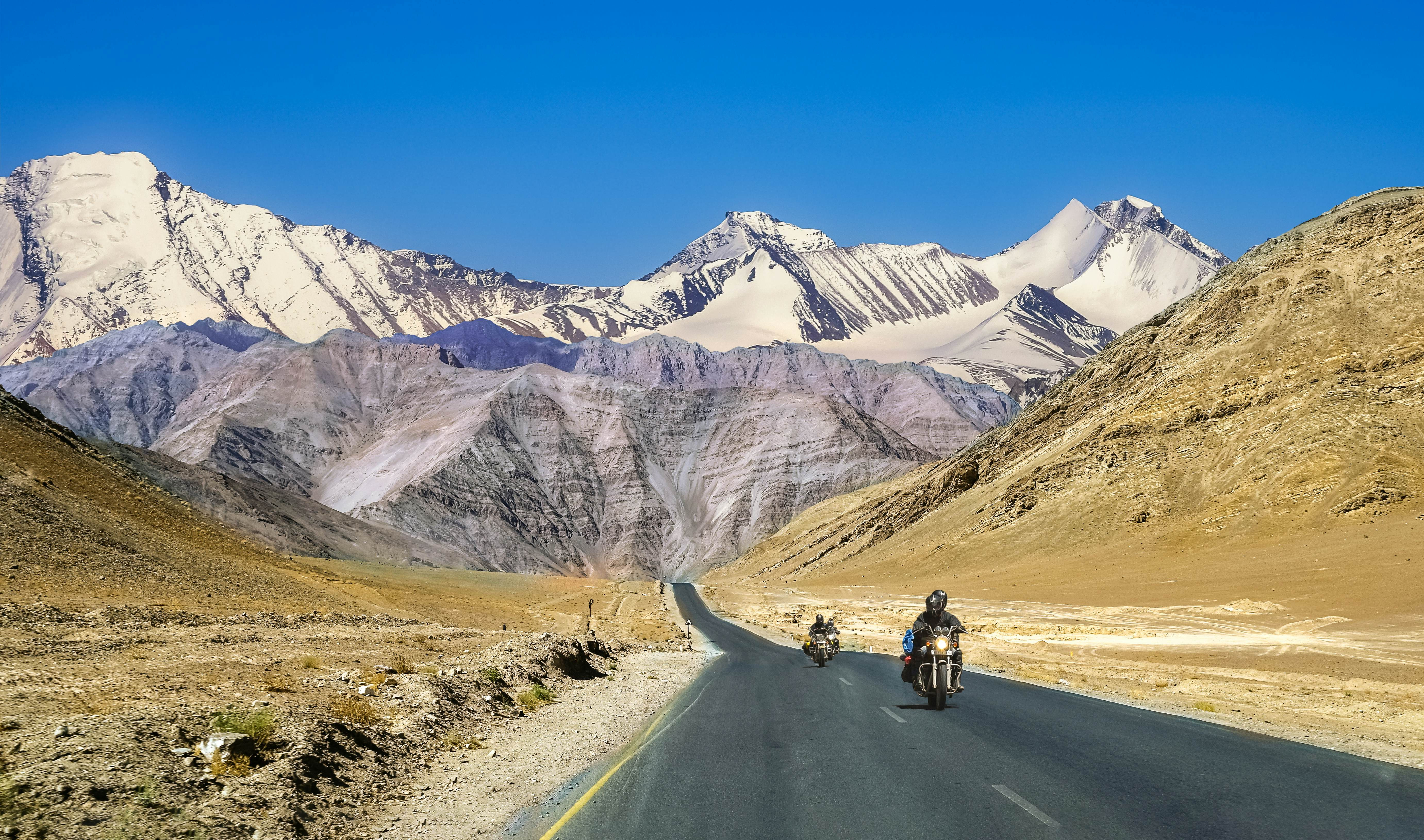 Motorcyclists ride against a mountain backdrop in Ladakh in India.
Motorcyclists ride against a mountain backdrop in Ladakh in India.
Shoulder Season & Autumn (October & November): Best of Both Worlds
October and November represent a sweet spot in India’s travel calendar. As the monsoon recedes and winter approaches, these months offer a blend of pleasant weather across much of the country, fewer crowds than peak winter, and a vibrant festive atmosphere.
Ideal for:
- Pan-India Travel: This shoulder season is arguably the best time for a comprehensive tour of India. The weather is generally agreeable across North, Central, and South India, allowing you to experience diverse regions without extreme temperatures or heavy rains.
- Festival Celebrations: October and November are packed with major Indian festivals, including Navratri, Durga Puja, Dussehra, Diwali, and the Pushkar Camel Fair. These festivals bring spectacular displays of culture, lights, and festivities.
- Rajasthan Rejuvenation: The desert state of Rajasthan comes alive after the monsoon. The landscapes become surprisingly green, and the weather is wonderfully mild for exploring forts and deserts.
- Trekking in Foothills: Trekking season begins in the Himalayan foothills, offering clear skies and comfortable temperatures for lower-altitude treks.
- Beach Destinations: Coastal areas in South India and Goa start to gear up for the tourist season, with pleasant weather and fewer crowds than December-March.
Things to consider:
- Slight Regional Variations: While generally pleasant, weather can still vary regionally. Early October might still see some lingering monsoon effects in certain areas, while nights can start to get cooler in North India by late November.
- Festival Crowds: Major festivals attract large crowds, which can be exciting but also require advance planning for accommodations and travel.
- Ladakh Transition: Ladakh’s tourist season winds down by October, and roads might close later in November due to snowfall.
 A traditionally decorated camel with its owner at Pushkar
A traditionally decorated camel with its owner at Pushkar
Spring (February to April): A Transition Period
Spring in India, roughly from February to April, is a transitional season. Winter’s coolness gradually gives way to summer’s warmth. This period can be a good time to visit if you’re looking for pleasant weather in some regions and don’t mind the heat starting to build in others.
Ideal for:
- South India & Eastern India: South India continues to enjoy pleasant weather in early spring. Eastern India, including Kolkata and Odisha, also experiences comfortable temperatures before the summer heat sets in.
- Foothills Trekking: Spring is another good time for trekking in the lower Himalayan foothills as the weather is mild and landscapes are blooming.
- Avoiding Peak Crowds (Early Spring): Early spring (February-March) can offer a window to experience some popular destinations with slightly fewer crowds than the peak winter season.
- Festival of Holi (February/March): Experience the vibrant and colorful festival of Holi, celebrated across India, marking the arrival of spring.
Things to consider:
- Rising Temperatures: Temperatures start to rise noticeably across India as spring progresses, particularly in the plains. By April, the heat can become intense in many regions.
- Variable Weather: Spring weather can be somewhat unpredictable. You might experience pleasant days but also occasional heat waves or unseasonal showers.
- Shoulder Season Prices (Increasing): Prices for accommodations and tours might start to increase as the peak summer travel season approaches in some hill stations and the shoulder season ends.
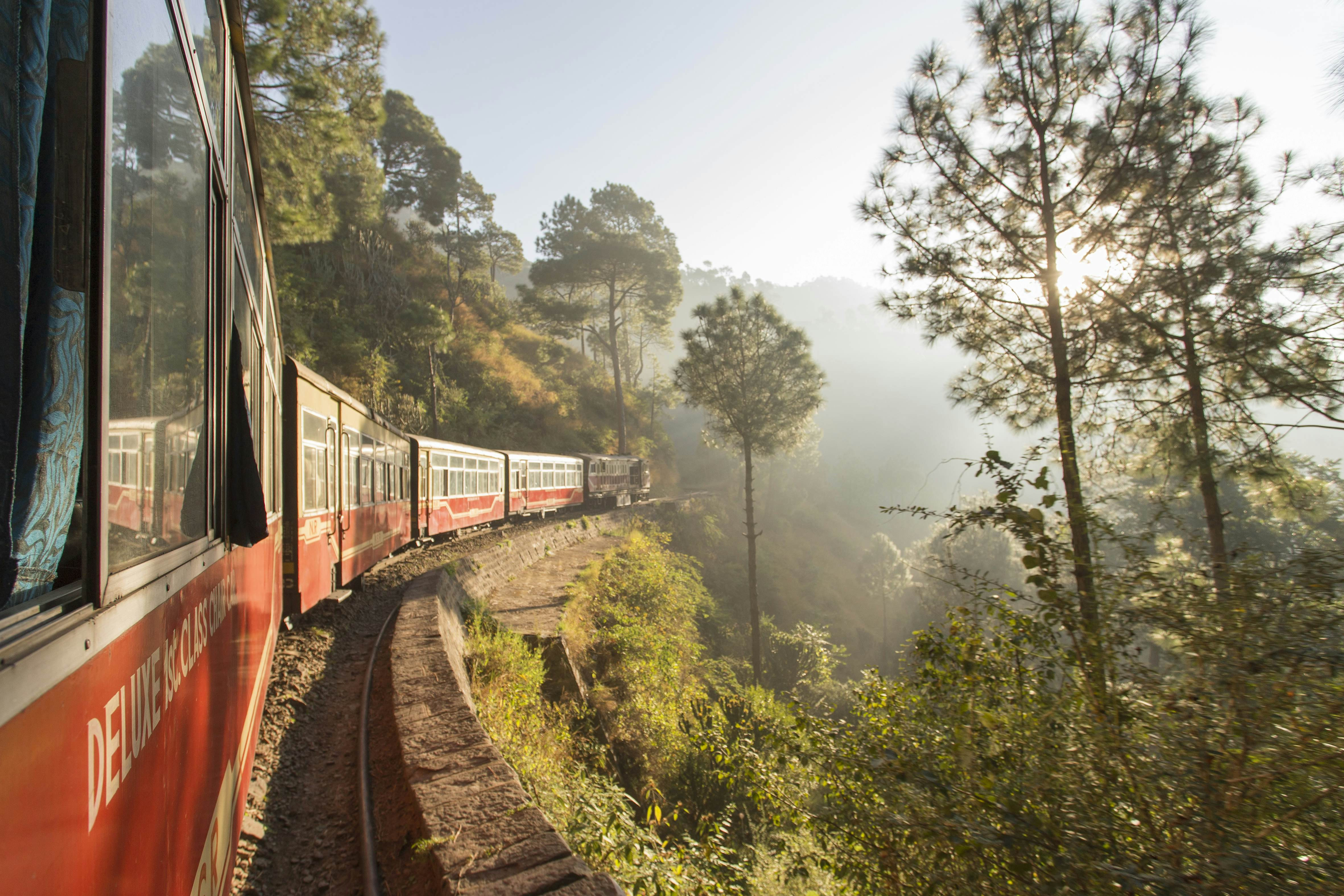 The Shivalik Deluxe Express train from Kalka to Shimla rounds a corner its journey. The train line is very scenic, hugging the side of a mountain and surrounded by forest.
The Shivalik Deluxe Express train from Kalka to Shimla rounds a corner its journey. The train line is very scenic, hugging the side of a mountain and surrounded by forest.
India’s Festival Calendar: A Year-Round Spectacle
Beyond the weather, India’s vibrant festival calendar is a significant factor in planning your trip. Festivals are celebrated throughout the year, offering unique cultural experiences.
- Holi (February/March): The festival of colors, marking the arrival of spring, celebrated with playful color throwing.
- Republic Day (January 26th): A grand parade in Delhi showcasing India’s military strength and cultural diversity.
- Diwali (October/November): The festival of lights, celebrated nationwide with fireworks, lamps, and sweets.
- Durga Puja & Navratri (October/November): Major festivals in Eastern and Western India, celebrating the divine feminine with elaborate decorations and festivities.
- Pushkar Camel Fair (October/November): A unique livestock fair in Rajasthan, combined with cultural events and festivities.
- Christmas (December): Celebrated with enthusiasm, especially in Goa and Kerala, with decorations and festive meals.
- Rath Yatra (June/July): A grand chariot procession in Puri, Odisha.
- Hemis Festival (June/July): A colorful Buddhist festival in Ladakh with masked dances.
- Ganesh Chaturthi (August/September): Celebrated with the immersion of Ganesh idols, particularly grand in Mumbai.
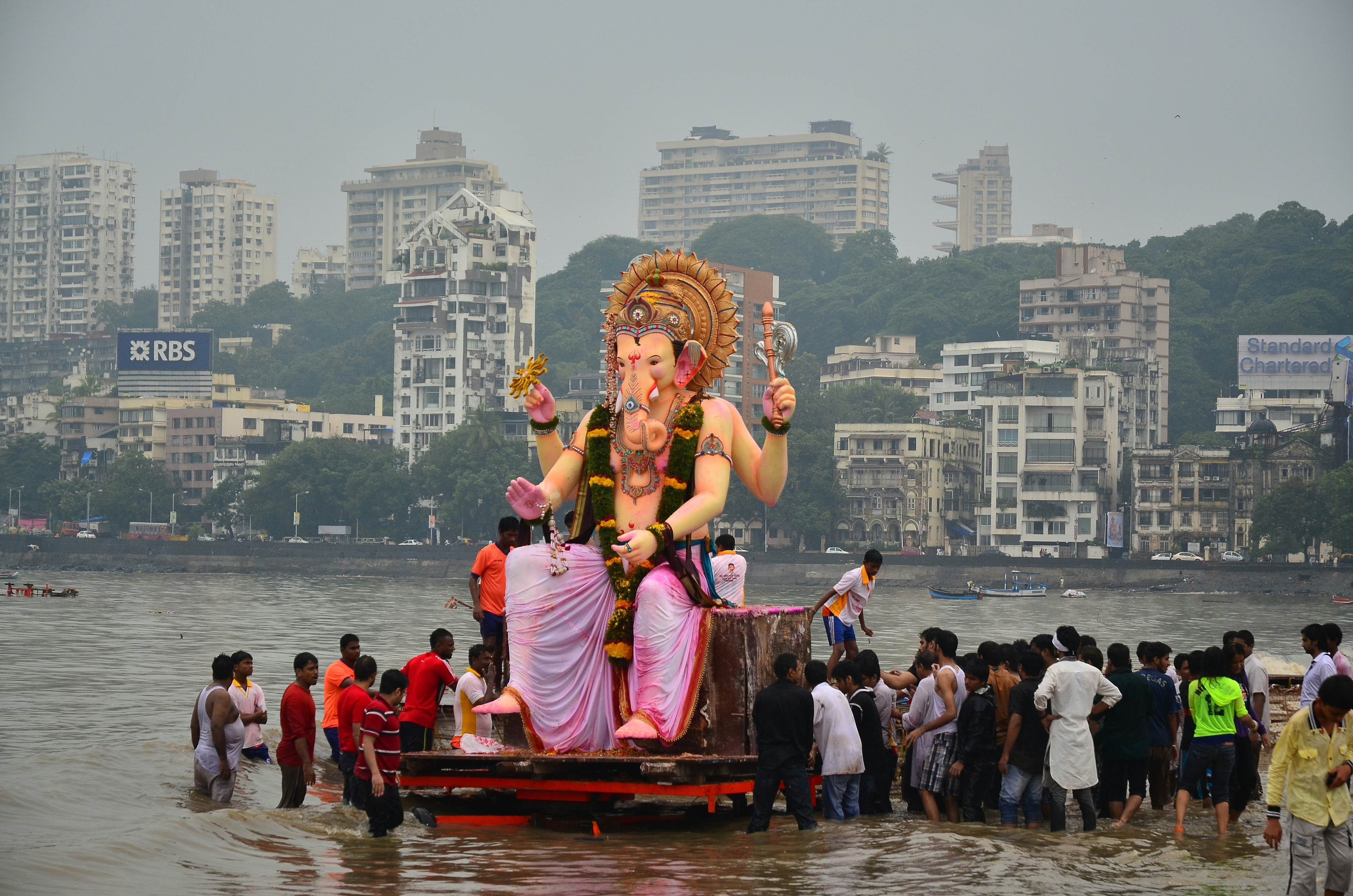 Devotees immerse an enormous idol of Ganesh at Ganesh Chaturthi in Mumbai.
Devotees immerse an enormous idol of Ganesh at Ganesh Chaturthi in Mumbai.
Conclusion: Tailoring Your Trip to the Best Time
Ultimately, the best time to travel to India depends on your interests and the regions you wish to explore.
- For North and Central India (Golden Triangle, Rajasthan, Tiger Safaris): December to March offers the most pleasant weather.
- For the Himalayas (Ladakh, Himachal, Uttarakhand): June to September is ideal.
- For a balance of good weather and fewer crowds (Pan-India): October and November are excellent shoulder season months.
- For budget travel and unique monsoon experiences: June to September (though be prepared for rain).
- For South India & Eastern India: Winter (December to March) and early Spring (February-March) are preferable.
By understanding India’s diverse seasons and regional climates, you can plan your trip for the most enjoyable and fulfilling experience, ensuring you witness the best of what this incredible country has to offer, whenever you choose to visit.
